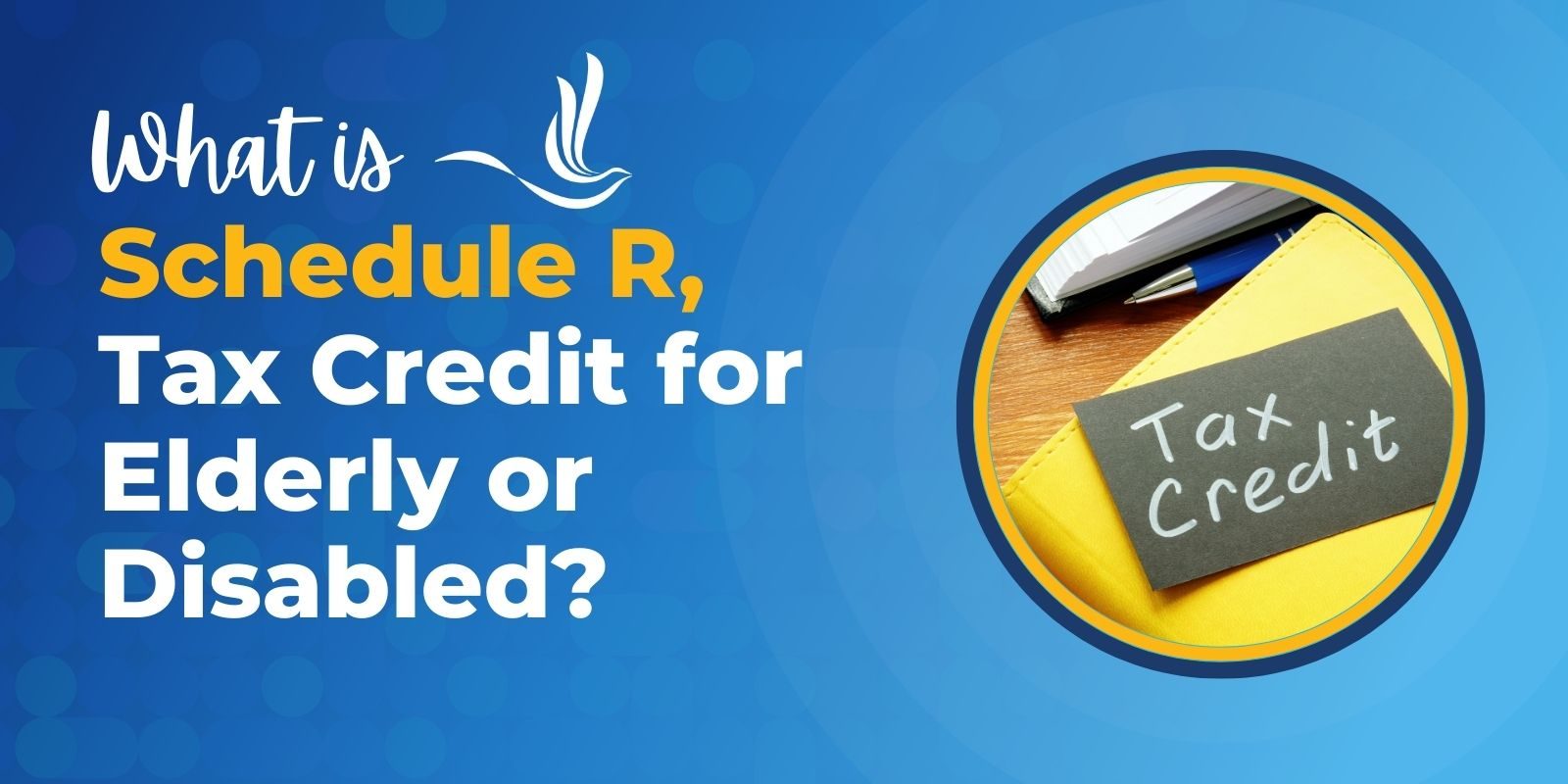Key Takeaways of Schedule R
- Purpose: Schedule R is used to claim the Credit for the Elderly or the Disabled, providing nonrefundable tax relief to qualifying individuals. Schedule R helps reduce your tax liability and can result in a lower overall tax burden or a larger tax refund.
- Eligibility Requirements: You must be 65 or older, or under 65 and permanently and totally disabled with taxable disability income.
- Income Limits: Eligibility depends on adjusted gross income (AGI) and nontaxable income, with thresholds varying by filing status.
- Credit Calculation Range: The credit ranges from $3,750 to $7,500, decreasing as income increases.
- Filing Instructions: Complete Schedule R and attach it to Form 1040 or 1040-SR to claim the credit
Tax season can be a daunting time for many, with the intricacies of various forms and schedules often causing confusion. Among these, Schedule R is a form that remains relatively unknown to many taxpayers. However, for those who qualify, Schedule R can be a valuable resource.
It allows eligible individuals to claim the Credit for the Elderly or the Disabled. In this article, we will explore the ins and outs of Schedule R, helping you better understand its significance and how it can potentially benefit you or your loved ones.
What is Schedule R?
Schedule R is an attachment to Form 1040 or 1040-SR that specifically pertains to the “Credit for the Elderly or the Disabled.” This credit is designed to provide tax relief for individuals who meet specific age, disability, and income criteria. The credit is nonrefundable, which means it can reduce your tax liability but will not result in a tax refund.
Who qualifies for the Credit for the Elderly or Disabled?
To be eligible for the Credit for the Elderly or the Disabled, taxpayers must meet specific criteria related to their age, disability status, and income to receive tax relief that reduces their tax liability.
Age Requirement
You must be at least 65 years old by the end of the tax year. Alternatively, if you are younger than 65, you can still qualify if you have retired on permanent and total disability.
Disability Requirement
If you are under 65, you must have retired on permanent and total disability to qualify.
The IRS defines this as being unable to engage in any substantial gainful activity due to your physical or mental condition. The condition must have lasted or be expected to last for at least a year or result in death. You must receive taxable disability income. Finally, you must be younger than your employer’s mandatory retirement age before the beginning of the tax year.
Filing Status
You must file as single, head of household, qualifying widow or widower, or married filing jointly.
Married individuals who file separately are not eligible for this credit. If you are filing a joint return with your spouse, your spouse must also meet these conditions.
Income Limit
Income limits for the Credit for the Elderly or the Disabled vary by filing status and type of income. There are income limitations to qualify for this credit based on your adjusted gross income (AGI). Alternatively, the IRS may use your nontaxable Social Security benefits and other nontaxable income.
For 2025, you are ineligible for the credit if:
- You file single, head of household, or are a qualifying surviving spouse with an AGI of $17,500 or more
- You are married filing jointly and only one spouse qualifies with an AGI of $20,000 or more
- You are married filing jointly and both spouses qualify with an AGI of $25,000 or more
- You are married filing separately with an AGI of $12,500 or more, or total nontaxable income (social security, nontaxable pensions, annuities, or disability income) of $3,750 or more
- You file as single, head of household, qualifying surviving spouse, or married filing jointly with both spouses eligible for the credit and have taxable income (social security, nontaxable pensions, annuities, or disability income) of $5,000 or more
- You are married filing separately with total nontaxable income (social security, nontaxable pensions, annuities, or disability income) of $3,750 or more
Calculating the Credit
The credit amount itself ranges from $3,750 to $7,500 and is calculated based on a formula. It takes into account both your income and the number of eligible individuals in your household. The higher your income, the lower the credit amount, and vice versa. The IRS provides a worksheet in the Schedule R instructions to help you calculate the exact amount of your credit.
Claiming the Credit
After filling out Schedule R, you can transfer your calculated credit to Schedule 3 with Form 1040.
You’ll also need to note that the credit was calculated via Schedule R. The credit amount will then be subtracted from your tax liability. Tax credits like Schedule R can help ease the financial burden for eligible elderly or disabled individuals.
Frequently Asked Questions
What supporting documentation do I need to prove permanent and total disability?
You may need a statement from your physician, Form 1040 Schedule R Part II certification, or proof of disability benefits from a recognized source like Social Security or a private insurer.
Can Social Security or veterans’ benefits count as taxable disability income?
Only if the benefits are included in your gross income. Most Social Security and VA disability payments are non-taxable and don’t qualify as taxable disability income for Schedule R.
How do I file Schedule R if I use tax software or an online preparer?
Most tax software automatically adds Schedule R if you meet eligibility criteria.
You’ll answer a few screening questions, and the system will generate and file the form with your return.
Is there a deadline extension for claiming the Credit for the Elderly or Disabled?
You must generally claim the credit by the tax filing deadline (typically April 15), but you may amend your return within three years if you later qualify.
Are there state-level credits similar to Schedule R that I can claim on my state return?
Some states offer senior or disability-related credits on their state returns. Check with your state’s tax agency or a local preparer to see what’s available in your area.
Tax Help for the Elderly and Disabled
If you or a loved one meet the criteria outlined in this article, consider exploring Schedule R further to determine if you qualify for the Credit for the Elderly or the Disabled. As always, consult with a tax professional or utilize reliable tax software to ensure accurate filing. Optima Tax Relief is the nation’s leading tax resolution firm with over a decade of experience helping taxpayers with tough tax situations.
If You Need Tax Help, Contact Us Today for a Free Consultation
Disclaimer: This story is auto-aggregated by a computer program and has not been created or edited by finopulse.
Publisher: Source link








